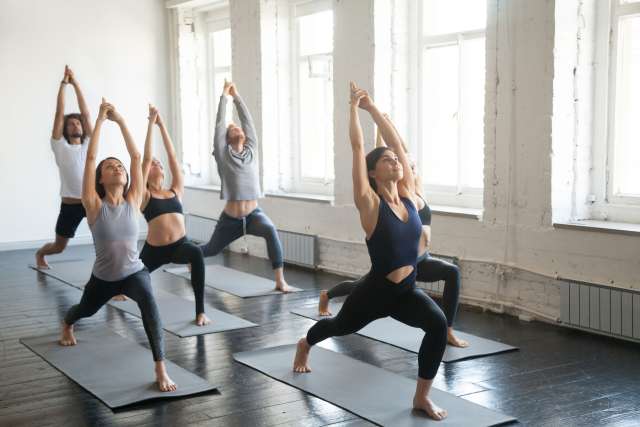If you’ve never done yoga before, the idea of joining a class may seem a bit intimidating. You might think it requires pretzel-like flexibility, headstands and complex poses.
But yoga is an activity just about anyone can do — no matter your age, fitness level or experience. The key is finding the right type of yoga to help you get the most benefits.
What is yoga?
Yoga is a collection of spiritual practices that dates back thousands of years. In India, where the practice of yoga began, the word refers to a variety of physical, meditative and religious components.
In the U.S., people most often practice the physical side of yoga. That consists of poses (called asanas) mixed with some breath work and meditation.
Benefits of yoga
There are many reasons to try yoga. And when you begin to make yoga practice part of your routine, you’ll begin to see some important mental and physical benefits.
As with many activities, the more you do yoga, the more you get out of it. But even by practicing just a few yoga poses for a couple of minutes each day, you’ll begin to see some improvements.
The physical benefits of yoga include:
- Better balance
- Improved strength
- Improved circulation
- Increased flexibility
- Injury prevention
- Relief from back pain and joint pain
The mental benefits of yoga include:
- Better mood
- Improved sleep
- Increased energy
- Stress reduction
The best types of yoga for beginners
With so many different types of yoga, it’s easy to find a style that suits you. But certain types of yoga may be better suited to beginners.
When you look at the class offerings at your local yoga studio or online, you may see some of these different yoga styles:
- Gentle or restorative yoga: If you are looking for a relaxing workout and slow, gentle stretches, restorative yoga is a great place to start.
- Hatha: This is often used as a general term to describe yoga that involves moving your body. Classes that describe themselves as Hatha yoga could be for beginners — or could be quite advanced. If you see this term, you should ask questions about the pace and difficulty of the class.
- Power yoga: This is typically a vigorous style of yoga designed to build strength. If you are in good shape, but new to yoga, you may enjoy this type of practice.
- Vinyasa or flow: This style keeps you in continuous motion, moving (or flowing) from one pose directly into the next. If the pace is quick, it will be difficult to follow as a beginner. Slow flow classes may be better suited to someone new to yoga.
- Yin: In Yin yoga, you hold poses for several minutes to get deeper stretches. While this can be a gentle practice, holding poses can also be quite challenging.
How to safely get started
Whichever type of yoga you try, it’s important to ease into your practice slowly. Since many types of yoga can be good for beginners, you should ask about the pace and difficulty of a particular class before joining.
Pick a style of yoga that sounds appealing, then talk to the teacher and let them know you’re a beginner. It’s also important to tell your yoga instructor about any injuries or physical limitations you have. They will help you modify poses when needed. They can also provide you with blocks, straps and other props that allow you to hold poses more easily.
If you are doing an online class, look for one geared specifically to beginners. And let your body be your guide — skip or modify any poses that cause pain.
While many yoga classes are an hour or longer, the beauty of yoga is that you can reap benefits even by practicing for just five or 10 minutes. When your body is feeling tight or sore, pull out your mat and do a few gentle yoga stretches. Of if you want a midday energy boost, move quickly through several energetic poses to get your blood flowing. And when you need some instant stress relief, sit quietly in a meditative yoga pose and focus on your breathing.
However you practice yoga, the benefits to your body and mind are worth the effort.



